You are here
Sher-Dor madrasah.
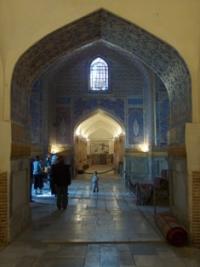
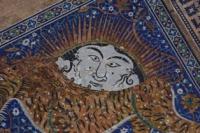
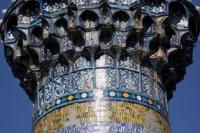
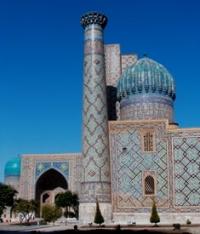
Walk on places of interest of an architectural ensemble Registan.
“That was the day the ancient songs of blood and war spilled from a hole in the sky
And there was a long moment as we listened and fell silent in our grief and then one by one, we stood tall and came together and began to sing of life and love and all that is good and true
And I will never forget that day when the ancient songs died because there was no one in the world to sing them”
Brian Andreas.
Blackout dates in Samarkand.
In 1647, ten years after completion of Sher-Dor madrasah, the construction of another madrasah - Tillya-Kari was started at the northern side of Registan, on the place of Mirzoi caravanserai.
By the mid - XVII century, Amir Temur's (Bibi-Khanym) cathedral mosque had already ruined and a new big mosque was required in the center of Samarkand, what caused the construction of Tillya-Kari.
Besides that, the madrasah of Alik Kukeltash had been also lost. Yalangtush-biy made a decision to construct a new complex on Registan, which should have combined a madrasah and cathedral mosque.
Construction of Tillya-Kari had taken almost twenty years and was completed five years after the of Yalangtush-biy, in 1660. Two centuries were to pass before аnyоnе found the energy to continue building round the Registan оn the grand scale set by Ulug Bek.
Ву the time the Sheibanid khan Yalangtush Bahador took up the challenge, wind-blown sand and the detritus of endless markets had caused street level to rise three metres. This is why the Sher Dor, or 'lion-bearing' madrasah (built 1619 - 1635) seems higher than the Ulugbek madrasa which it faces and of which it is а near-сору.
(It could not bе а perfect сору because, as the Koran says, nothing is perfect except Allah.). The lions in question-said to be the ones in the Регsian emblem are striped, which makes them look more like tigers.
You will find them chasing baby deer across the space аbоyе the principal arch, breaking the Islamic rule so rigidly adhered to in the older building: to depict по living thing. The twin suns rising over their backs are еven given human faces.
The Sher Dor has ribbed cupolas either side of the pishtak which the Ulugbek madrasa lacks-possibly, again, to break anу blasphemous symmetry-but overall, in the opinion of the Czech specialist Edgar Knobloch, this madrasah has cruder craftsmanship, larger patterns, over-accentuated lines, exalted floral ornaments and less harmony in colour than the original.
You can go inside, however. The cells round the courtyard produced an oversupply of student accommodation and were never full until the madrasa became а Russian hotel in colonial times.
Some are now hard-currency gift shops, оnе of whose owners is called Sergei and сап let you onto the roof for an unusual view of the Registan. The big dome hall for the new cathedral mosque was built at the western side of the madrasah’s yard. Inside, opposite the entrance to the mosque there is mihrab, decorated with marble.
To the right there is minbar with high marble steps. The mosque is covered with rich carpet-like pattern from the floor up to the top. The ornament was done in a technique "kundal" with plenty of gold.
Therefore, the madrasah was called Tillya-Kari, i.e. “covered with gold” (or "gilt"). The scale of gilding on the dome, walls and mihrab of Tillya-Kari surpasses all famous architectural structures in Central Asia, what gives the evidence for intention to strike visitors by splandour and richness.
The yard was used for praying. Beside the mosque, there are galleries on columns. On perimeter were located hudjras for students: in two floors at the main façade and in one - at two others.
To get into the madrasah from the square of Registan was possible through three entrance doors. Unlike two other buildings on Registan, Tillya-Kari has no towers and corner minarets. Instead of them, there are low turrets with lanterns covered by blue domes.
By the XX century, facing of the madrasah had been largely lost. The blue dome of the mosque remained uncompleted and was finished just in the 1970s during restoration works. The gilded ornaments in the mosque were restored at the same time.
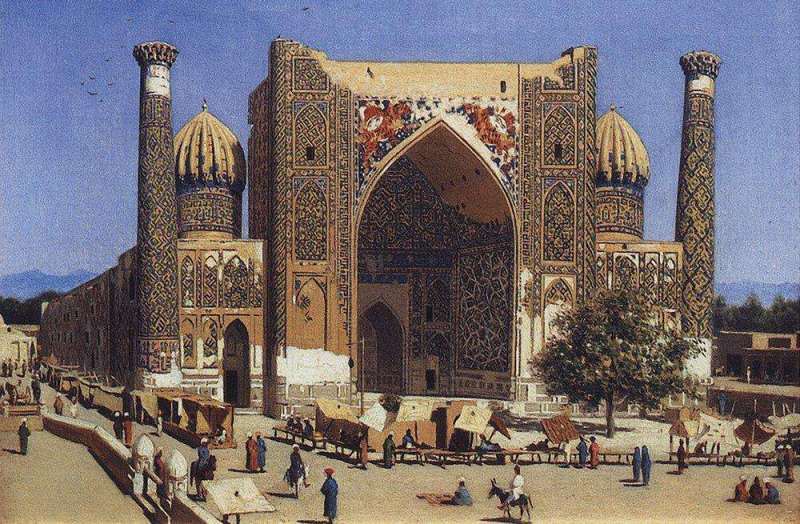
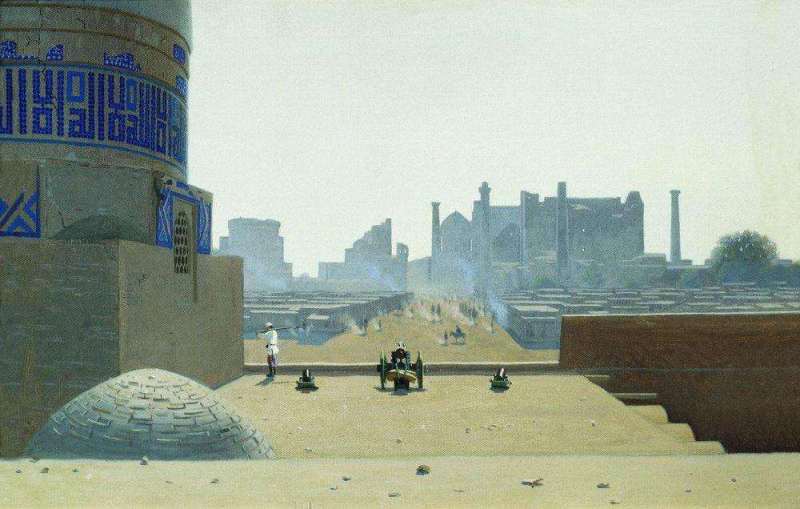
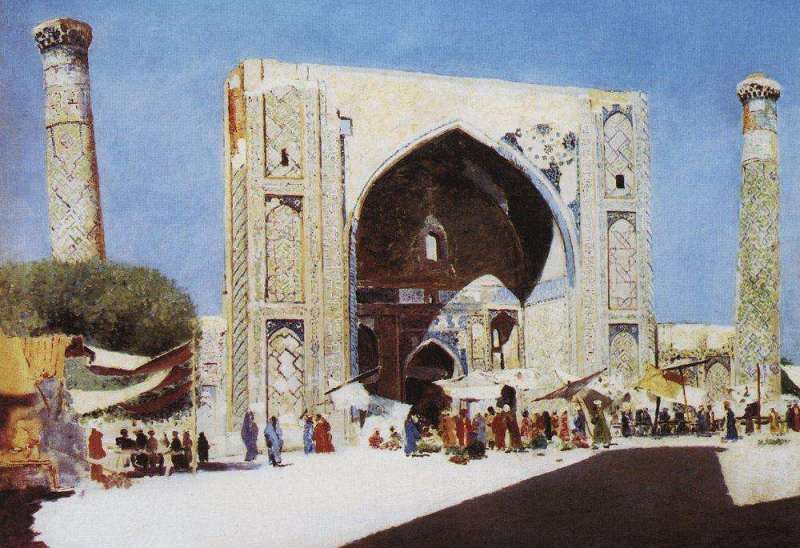
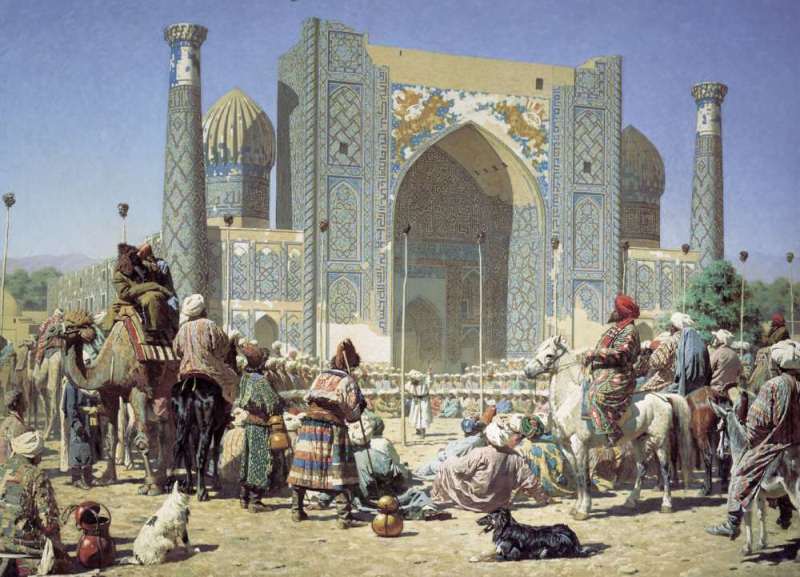
Authority:
Alexey Arapov. Samarkand. Masterpieces of Central Asia. Tashkent, San’at. 2004.
Photos
Alexander Petrov.







